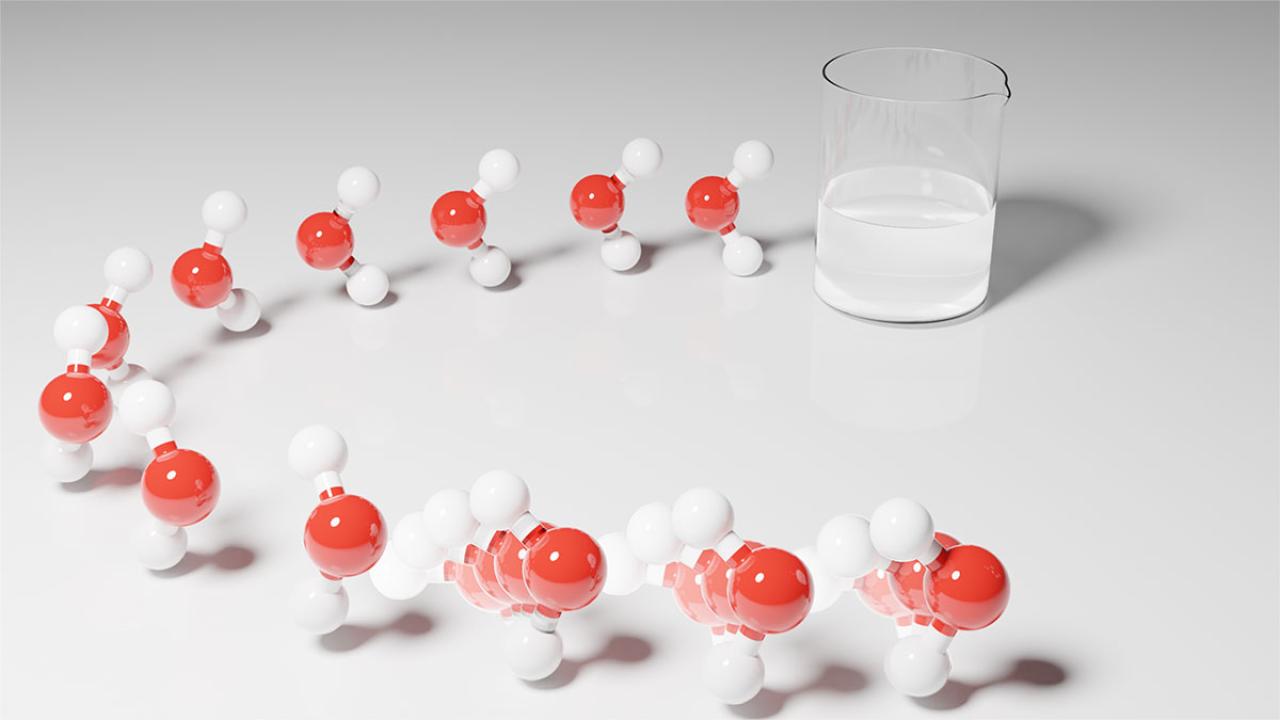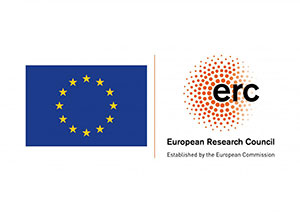
Water is ubiquitous in nature and everyday life, and its unique physico-chemical behaviour constitutes a key ingredient of every known lifeform. The uniqueness of water is due to both the spatial arrangement adopted by its molecules and the strong interactions between them (namely hydrogen bonds) that connect the molecules in an extended network. A major hurdle faced by scientists is related to understanding the role this underlying hydrogen-bond network plays in water dynamics.
A new open-access paper published in Nature Communications and titled “The Collective Burst Mechanism of Angular Jumps in Liquid Water” describes the relationship between hydrogen-bond network reorganisation and collective reorientational dynamics in liquid water. The paper is a result of a multidisciplinary collaboration at ICTP's Condensed Matter and Statistical Physics (CMSP) section, in which scientists adopted both atomistic simulations and statistical physics-based approaches. The project required the team to integrate numerical simulation methods used in the condensed matter physics community (in particular molecular dynamics), statistical physics approaches developed to understand collective behaviour, and data science techniques used to circumvent or reduce human intervention.
"The hydrogen-bond network is not fixed. It changes continuously due to thermal fluctuations and other factors that break and form individual hydrogen bonds," explains Adu Offei-Danso, the first author of the study and a former ICTP Diploma student. The published work is based on Offei-Danso’s PhD thesis, which he obtained through the ICTP/SISSA PhD programme. "These fluctuations of the hydrogen-bond network are crucial for various physical, chemical, and biological processes happening in liquid water, he adds, "and that’s why it is so important to understand their microscopic mechanism."
Water molecule rotation is believed to be key to hydrogen-bond dynamics. More than a decade ago, scientists discovered that the re-orientational dynamics of water molecules typically involve sudden large-amplitude angular jumps rather than slow rotation through small diffusive steps, as was previously believed. "These large-angular jumps were thought to be isolated events," says CMSP scientist Ali Hassanali, who has a long-standing interest in the physical chemistry of aqueous systems. "When these sudden and quick rotations happen, there is a breakage and forming of hydrogen bonds with neighbouring molecules. So, there is an alteration in the local hydrogen-bond network."
But what happens to the other water molecules in the network? Do they remain as spectators, or are they active participants in a more collective process? Addressing these questions forms part of Hassanali's recent ERC Consolidator Grant that he received in 2022.
"This is precisely what we wanted to find out," states Hassanali.
The presence of collective and concerted processes in water reorientational dynamics has previously been indicated only in spectroscopy experiments. "In statistical physics, we see collective behaviour in so many diverse systems, from groups of animals to superconductors," says CMSP researcher Asja Jelic, adding, "In all these systems, unexpected macroscopic properties emerge from interactions between underlying particles. So far, the microscopic mechanism behind the collective water reorientation dynamics has remained elusive."
Borrowing ideas from the statistical physics of collective behaviour, computer simulations of liquid water were performed. "To show whether there is a collective process at all in water reorientation dynamics, we first needed to identify an observable that is able to capture the abrupt angular motion of water molecules," explains Offei-Danso. Using this observable allowed the researchers to construct a protocol that automatically detected sudden fluctuations in reorientational dynamics. "We developed a tool that allowed us to observe a myriad of angular jumps happening simultaneously in the system. What’s more, we discovered that they occur in a highly orchestrated and coordinated fashion," states Offei-Danso.
The team discovered a strong interplay between water molecule angular rotation and changes in topology and density in the hydrogen-bond network. "The picture that emerges from our results is that once a large jump occurs, a cascade of hydrogen-bond fluctuations takes place," describes ICTP senior research fellow Uriel Morzan. These hydrogen-bond network fluctuations then give rise to a subsequent wave of large and small angular jumps. "Our analysis shows collective reorientation and network rearrangements that involve several larger groups of nearby molecules spread throughout the system," explains Alex Rodriguez, a chemist working on the development and implementation of data science techniques. Rodriguez previously worked at ICTP, and is currently at the University of Trieste. "I think it is fascinating how data science approaches are percolating into a great variety of other fields. Without our automatic jump-detection approach, we would have never found this collective behaviour," adds Morzan.
Since liquid water is a common solvent found in physical, chemical, and biological processes, this work lays the groundwork for exploring the role of cooperative dynamics in various situations. Open questions include the possibility of tuning chemical reactions, and behaviour close to biological interfaces, where one might expect to see an enhancement of collective phenomena.
The Collective Burst Mechanism of Angular Jumps in Liquid Water
Adu Offei-Danso, Uriel N. Morzan, Alex Rodriguez, Ali Hassanali, Asja Jelic Nature Communications 14, 1345 (2023).
DOI: https://doi.org/10.1038/s41467-023-37069-9

















